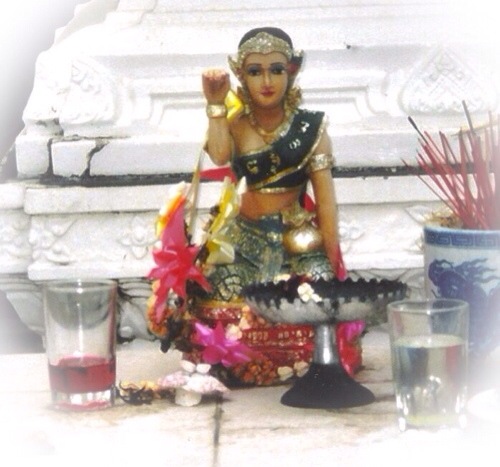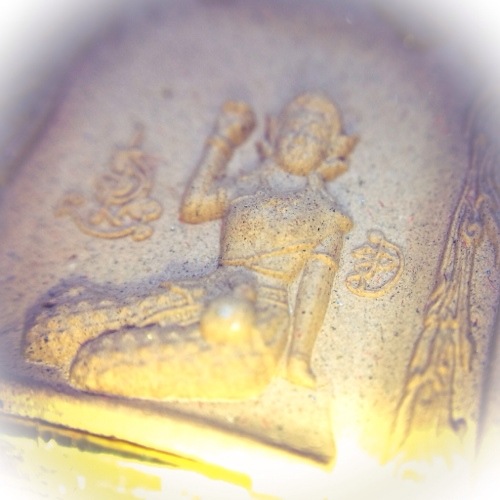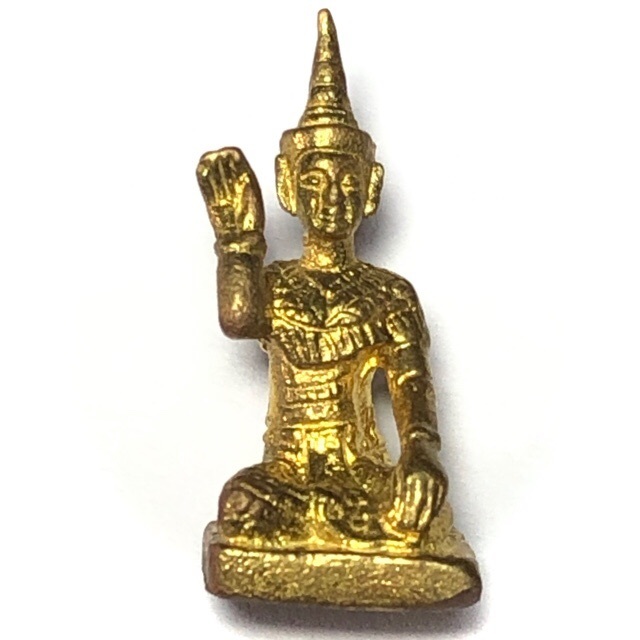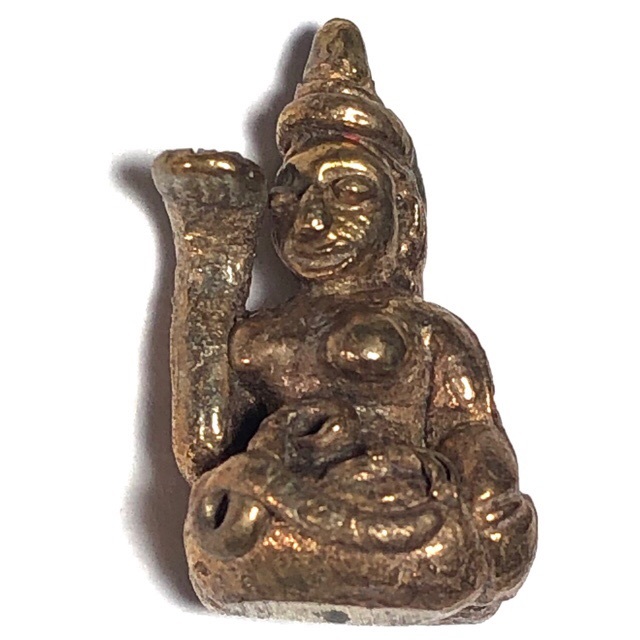The Legend of Nang Kwak (Nang Supawadee)
The Thai Legend of Nang Kwak holds a significant place in the cultural folklore of Thailand, particularly among shop owners and merchants. Regarded as the patron saint of business owners, Nang Kwak is renowned for her beckoning gesture, inviting customers with her raised right hand. This captivating legend has been passed down through generations and remains one of the most well-known tales in Thailand.
Nang Kwak is depicted as a resplendent woman donning a traditional Thai red dress, adorned with a golden crown upon her head. With grace, she assumes a kneeling position, her right hand gently beckoning customers with the palm facing downwards, while her left hand either holds a bag of gold or rests serenely on her lap.
The origins of the legend can be traced back to ancient India, where Nang Kwak was known as Nang Supawadee, the daughter of a humble merchant during the emergence of Buddhism approximately 2500 years ago. Supawadee’s parents were modest traders, earning just enough to sustain their small family. One fortuitous day, as Supawadee assisted her parents in selling their wares in a neighboring town, she had the privilege of listening to a sermon delivered by Pra Kassapa Maha Thera, an enlightened Arahant. Deeply moved by the teachings of Buddhism, Supawadee promptly sought refuge in the Triple Gem and became a devoted follower of the faith.
Witnessing Supawadee’s unwavering faith and devotion, Pra Kassapa Maha Thera, with the immense concentration and power of an Arahant, bestowed upon her and her family blessings of prosperity and great fortune in their trade. Moreover, Supawadee received a special boon from Pra Kassapa Maha Thera, ensuring extraordinary blessings as long as she diligently adhered to the teachings of Dharma. It was during a business trip to another town that Supawadee, through a stroke of luck, encountered the preaching of Sivali Maha Thera, which coincided with Lord Buddha Sakyamuni’s discourse on Dharma.
Under the guidance of Sivali Maha Thera, Supawadee’s understanding and knowledge of Dharma flourished. With each passing day, her fortunes and the metta (loving-kindness) bestowed upon her by Sivali Maha Thera magnified exponentially. As she wholeheartedly embraced the practice of Dharma, Supawadee’s remarkable blessings grew even stronger. Sivali Maha Thera’s profound teachings imbued her with exceptional psychic abilities, further enhancing her ability to bestow metta upon others.
The extraordinary blessings from these two revered saints bestowed upon Supawadee and her family resulted in remarkable sales and prosperity whenever she accompanied her parents on their business ventures. However, when Supawadee was absent from the marketplace, sales dwindled. Recognizing the significant impact her presence had on their transactions, her parents decided to bring her along on every sales trip, firmly believing that her blessings and merits were the key to their success.
Supawadee became the catalyst for her family’s immense fortune, transforming them into prosperous merchants. Her father, known for his kindness and generosity, would offer fellow travelers the opportunity to accompany him on his journeys. Those fortunate enough to ride with him witnessed firsthand the tremendous power of Supawadee’s metta, which had paved the way for her parents’ success. As time passed, Supawadee’s parents grew old and eventually passed away, leaving behind their blessed daughter. Undeterred, Supawadee continued their sales, garnering the love and devotion of those around her. Although she, too, eventually reached the twilight of her life, her spirit remained in the human realm, dedicated to assisting others.
Following Supawadee’s demise, statues and talismans were created in her honor, and people began to venerate her as a saint. Her legend endured, ingrained in the hearts of those who regarded her as the guardian angel and patron saint of all merchants. Many continued to pray to her and offer tributes, seeking to increase their merits and achieve prosperity in their business endeavors.
The legend of Supawadee gradually made its way to Thailand during the period when Buddhism and the Hindu Brahmin faith took root in the land known as Siam. The Brahmins brought statues of Supawadee in the form of a young girl seated on a cart, which was then transformed into the familiar image of Nang Kwak, a lady seated with her right hand raised in a beckoning gesture, accompanied by her left hand holding a bag of gold or resting peacefully on her lap. Thai people, witnessing the apparent success of the Brahmins in their business ventures, swiftly adopted Supawadee as an object of worship and prayer.
To this day, it is customary for shops and houses across Thailand to believe that paying homage to Nang Kwak brings good fortune in business. Those seeking prosperity in their sales actively seek out images or statues of Nang Kwak, making offerings in the hopes of invoking her spirit and attracting favorable outcomes. The name “Nang Kwak” itself carries significance, with “Nang” denoting the word ‘Lady’, and the word “Kwak” meaning ‘to Wave and Beckon towards you’.




